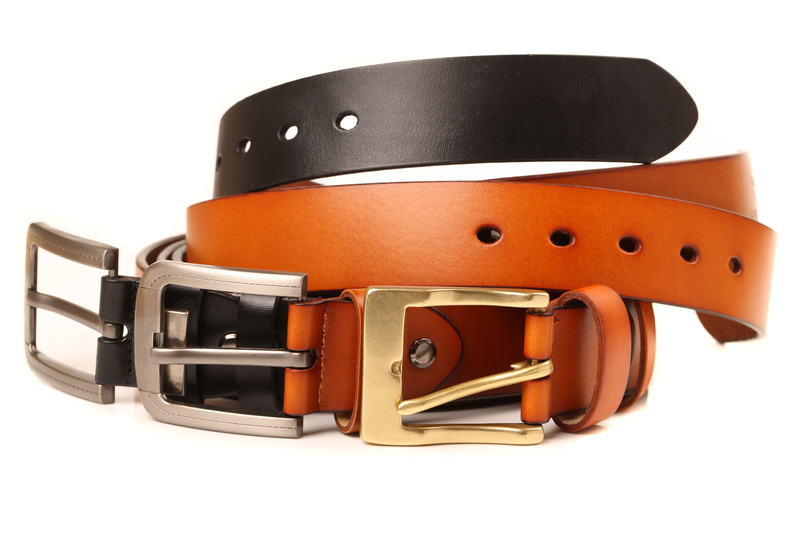Optimal freezer storage methods for when it's on break
Posted on 25/06/2025
Is your freezer on the fritz, or are you planning a seasonal defrost? Maybe you're moving, or simply giving your appliance a well-deserved rest. Whatever the reason, knowing the best freezer storage solutions during breaks is crucial to keeping your food safe, fresh, and minimizing waste. In this comprehensive guide, you'll find expert strategies, tips, and innovative optimal freezer storage methods for when your freezer is not in use or is on a temporary break.
Why Proper Freezer Storage Matters When It's on Break
It's easy to underestimate the importance of proper storage solutions when your freezer isn't working or is switched off. Improper handling can lead to food spoilage, wastage, and even health hazards. Adopting optimal freezer storage techniques can help you save money, reduce waste, and ensure your food stays safe for when your freezer is operational again.
Main Challenges During Freezer Downtime
- Food spoilage: Without proper cold temperature, perishable items can quickly become unsafe.
- Cross-contamination: As food thaws, juices and bacteria can spread if not contained.
- Quality loss: Texture, taste, and nutritional value can deteriorate rapidly once food begins to thaw.
Let's explore the best practices for freezer storage when your appliance is out of action.

Before the Break: Preparation Steps for Freezer Storage
Preparation is key for optimal food preservation during freezer downtime. The following steps will help you minimize spoilage and loss of quality:
1. Take Stock of Your Freezer
Begin by creating an inventory of your frozen items. Organize them into categories: meats, vegetables, ready-to-eat meals, dairy, and baked goods.
- Identify high-risk items: Meats, seafood, and dairy products spoil quickest.
- Separate items for immediate use: Set aside anything you can cook or use before the freezer break.
2. Cook or Use Perishables
To avoid waste, plan meals that prioritize the use of highly perishable items from your freezer. Convert raw meat into cooked dishes or stews, as these often last longer in the fridge than their uncooked counterparts.
3. Deep Clean Your Freezer
Once mostly empty, use this opportunity to thoroughly clean your appliance. This will prevent lingering odors and mold during downtime.
- Turn off and unplug the freezer.
- Use warm, soapy water or a vinegar solution to clean all surfaces.
- Dry thoroughly with a soft towel to prevent mold growth.
During the Break: Storing Food Safely Without a Freezer
When your freezer is out of commission, the focus shifts to maintaining food safety and quality without freezing. Here are the top freezer storage alternatives and their pros and cons.
1. Move to a Working Freezer
If you have access to another freezer--perhaps at a relative's or a communal facility--this is the optimal solution. Label items clearly and keep foods grouped for easy retrieval.
2. Insulated Coolers with Ice Packs
For shorter breaks (up to 2 days), large coolers packed with ice or gel packs can maintain a safe temperature (below 4?C or 40?F).
- Pack tightly: The less air space, the longer the contents stay cold.
- Limit opening: Only open the cooler when absolutely necessary to retain the cold.
3. Use a Refrigerator
If your fridge has free or spare space, move frozen items you want to keep coldest to the back of the bottom shelf. This is typically the coolest spot.
4. Drying, Canning, or Dehydrating
For items that won't survive more than a day or two without freezing, consider alternative preservation methods such as drying, canning, or dehydrating. This works well for fruits, vegetables, and even some meats.
- Dehydrating: Use a dehydrator or an oven to preserve sliced fruits and veggies.
- Canning: Convert surplus produce and meats into shelf-stable jars.
5. Salt-Curing or Smoking Meats
Traditional preservation methods like salt-curing or smoking can extend the shelf life of meats and fish if planned in advance.
Packaging: The Key to Optimal Freezer Storage During Breaks
No matter how you store your food, appropriate packaging is critical to maintaining safety and preventing contamination.
Best Practices for Food Packaging
- Use airtight containers or vacuum-sealed bags: Limit oxygen exposure and leaks.
- Double-bag sensitive items: Especially meats and seafood to avoid cross-contamination.
- Label and date everything: Clearly mark contents and when they were packed/thawed.
- Keep similar items together: This helps maintain temperature and organization.
What to Do with Thawed Food
Sometimes, even with the best intentions, things thaw. What next? Here's how you can manage:
- If still cold (below 40?F/4?C): Many items may be cooked or refrozen, though some loss of quality is expected. Never refreeze fully thawed, uncooked fish or shellfish.
- If above 40?F (4?C) for more than 2 hours: Discard these products to avoid foodborne illness.
Foods That Refreeze Well vs. Those That Don't
- Refreeze: Breads, berries, and vegetables (with minor texture changes).
- Don't Refreeze: Ice cream, soft cheeses, and delicate seafood.
Freezer Storage Best Practices for Routine Downtime
Maintenance downtime happens. Here are optimized freezer storage guidelines for scheduled breaks like cleaning, defrosting, or seasonal power outages:
1. Use Up Frozen Inventory Beforehand
Plan ahead to minimize the amount of food left in the freezer when you know a break is coming. Adjust your meal plan to use up perishables first.
2. Set Up a Food Swap
Partner with neighbors or friends for temporary storage, or trade perishable items for pantry goods until your freezer is operational.
3. Create a Priority List
When space is limited, prioritize high-value or hard-to-replace items for other storage methods.
Innovative and Sustainable Freezer Storage Alternatives
Looking for sustainable solutions for freezer downtime? Reducing food waste is both eco-friendly and budget-conscious. Consider these options:
- Freeze-drying: Modern countertop freeze-dryers can turn many foods into lightweight, shelf-stable meals.
- Fermentation: Preserve vegetables or fruits through fermenting (think pickles, kimchi, or sauerkraut).
- Community freezers: Leverage shared resources in your neighborhood during planned outages or breaks.
Long-Term Freezer Storage Tips for Extended Breaks
If you're planning an extended freezer shutdown, perhaps for months, special attention is needed for optimal storage:
- Deplete your inventory several weeks in advance to lower the risk of large-scale food loss.
- Convert everything possible to shelf-stable or refrigerated forms.
- Deep-clean and air out your freezer to prevent mold, mildew, and odors.
Freezer Maintenance During the Break
- Keep the door ajar: Avoid musty smells and moisture build-up during inactivity.
- Check and clean the drain hole and tray: Remove any lingering water to prevent bacteria growth.
Food Safety Guidelines: What to Keep and What to Toss
Understanding food safety during freezer downtime is vital. When in doubt, follow these rules:
- Meats and Poultry: If thawed in the fridge and cold to the touch, cook within 1-2 days.
- Prepared dishes: Reheat thoroughly if consumed after thawing. Discard anything with off odors or texture.
- Vegetables and fruits: Most can be cooked or processed into jams or preserves.
Key takeaway: When you lose confidence in an item's safety--err on the side of caution and dispose of it.

Frequently Asked Questions About Freezer Storage on Break
How long will food last in a turned-off freezer?
A full freezer can keep food frozen for about 48 hours; a half-full one lasts about 24 hours, assuming the door stays closed. Use this window to relocate or consume items.
Can I safely refreeze food that has partially thawed?
If items still contain ice crystals or are refrigerator-cold (below 40?F/4?C), it's generally safe, though some quality loss is likely.
What should I do with ice buildup after freezer downtime?
Let it melt and mop it up thoroughly before restarting the appliance to prevent mold and bad odors.
Conclusion: Mastering Optimal Freezer Storage When On Break
Whether your freezer is down for a defrost cycle, maintenance, a move, or an unplanned outage, applying optimal freezer storage methods during downtime will protect your food, reduce waste, and safeguard your budget. Remember to plan ahead, act quickly, and evaluate the best alternative preservation methods for your needs. Your freezer may be on break, but your food preservation skills never should be!
- Be proactive: Regularly rotate stock and prepare for possible outages.
- Stay organized: Keep food labeled and well-packaged, both in and out of the freezer.
- Prioritize safety: When unsure about food integrity, it's always better to be safe than sorry.
By following these optimal freezer storage tips for when it's on break, you can confidently manage your food supply and minimize disruptions, ensuring peace of mind and a well-fed household all year round.



